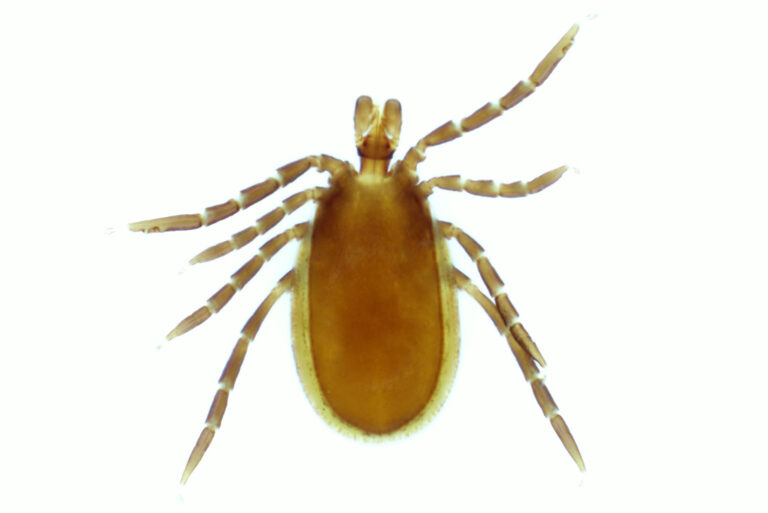Ixodes hexagonus

HEDGEHOGS – DOGS – MARTENS
The hedgehog tick, Ixodes hexagonus, is one of the most common tick species in Europe (Camacho et al. 2003; Nijhof et al. 2007). The main hosts for this parasite are hedgehogs (Dziemian et al. 2014), but it can also infest foxes and other canids (Claerebout et al. 2013). The life cycle of the hedgehog tick requires three hosts for blood meals, one in each developmental stage. An adult female can lay 150 to 600 eggs. After 73-102 days, the eggs hatch into larvae, which then develop into nymphs after approximately 77 days (Arthur 1951). Like other tick species, Ixodes hexagonus can transmit a range of pathogens.
Human pathogenicity: Ixodes hexagonus can also parasitize humans. It is considered a vector for Lyme disease and tick-borne encephalitis (TBE) and can transmit these diseases to humans through blood-feeding (Estrada-Peña & Jongejan 1999).
-
Arthur, DR. (1951)The bionomics of Ixodes hexagonus Leach in Britain. In : Parasitology, vol. 41, n° 1-2, p. 82–90.
-
Camacho, AT et al. (2003)Ixodes hexagonus is the main candidate as vector of Theileria annae in northwest Spain. In : Veterinary Parasitology, vol. 112, n° 1-2, p. 157–163.
-
Claerebout, E et al. (2013)Ticks and associated pathogens collected from dogs and cats in Belgium. In : Parasites & Vectors, vol. 6, p. 183.
-
Dziemian, S et al. (2014)Infestation of urban populations of the Northern white-breasted hedgehog Erinaceus roumanicus by Ixodes spp. ticks in Poland. In : Medical and veterinary entomology, vol. 28, n° 4, p. 465–469.
-
Estrada-Peña, A; Jongejan, F (1999)Ticks feeding on humans: a review of records on human-biting Ixodoidea with special reference to pathogen transmission. In : Experimental & applied acarology, vol. 23, n° 9, p. 685–715.
-
Nijhof, AM et al. (2007)Ticks and associated pathogens collected from domestic animals in the Netherlands. In : Vector Borne and Zoonotic Diseases (Larchmont, N.Y.), vol. 7, n° 4, p. 585–595.